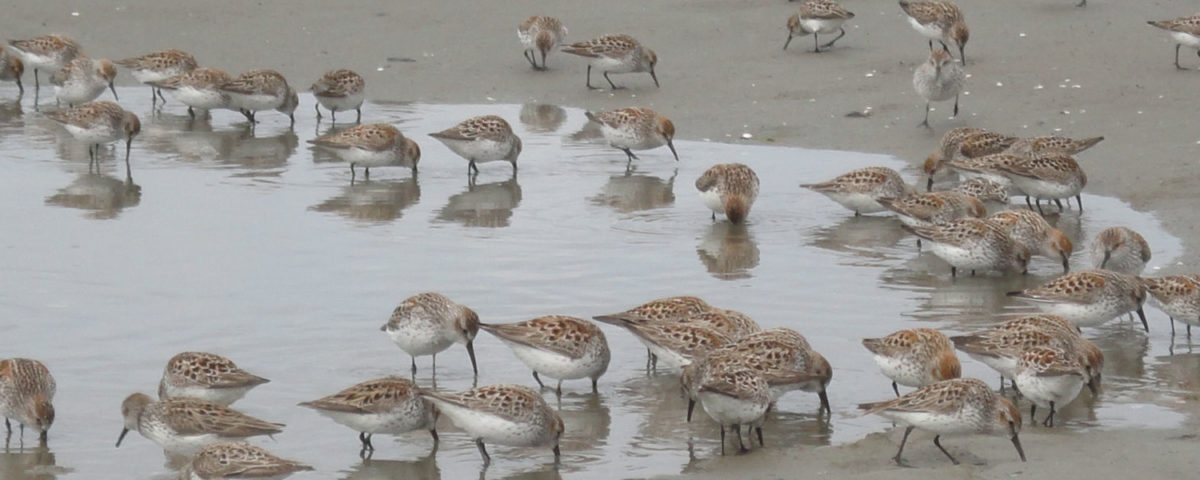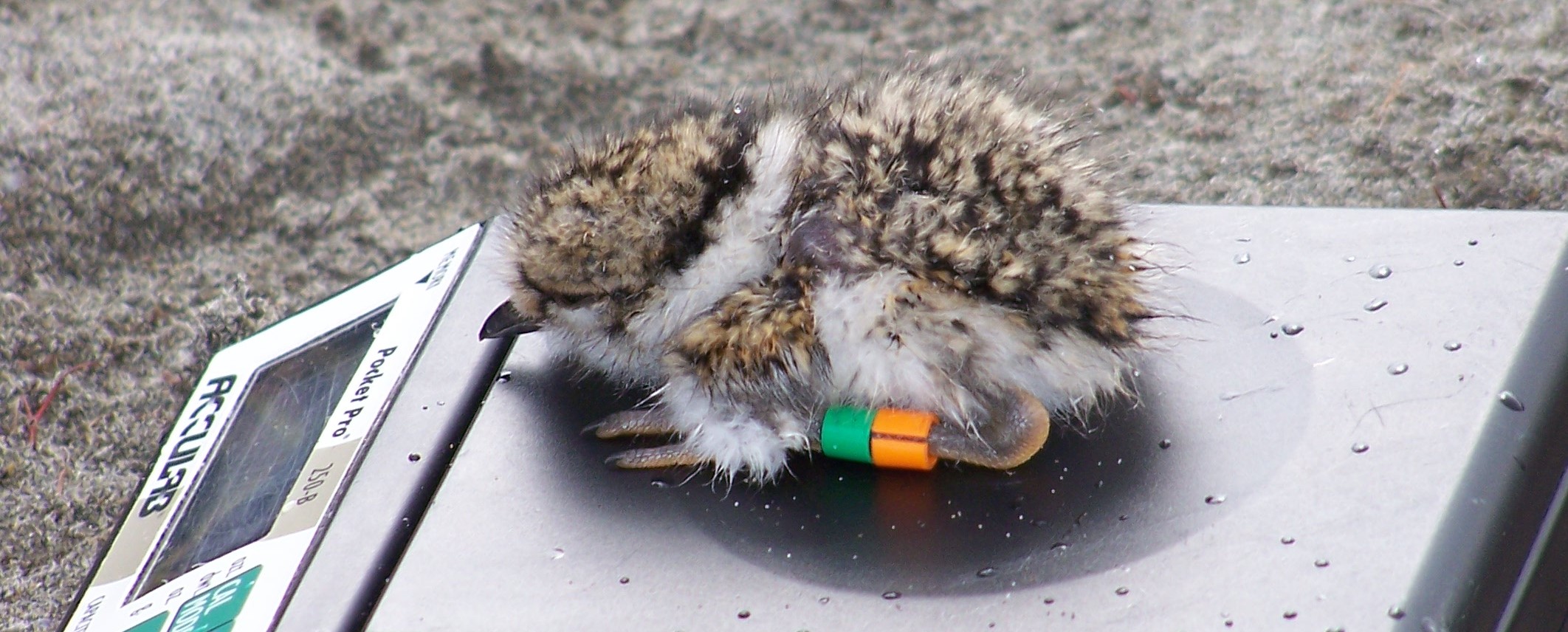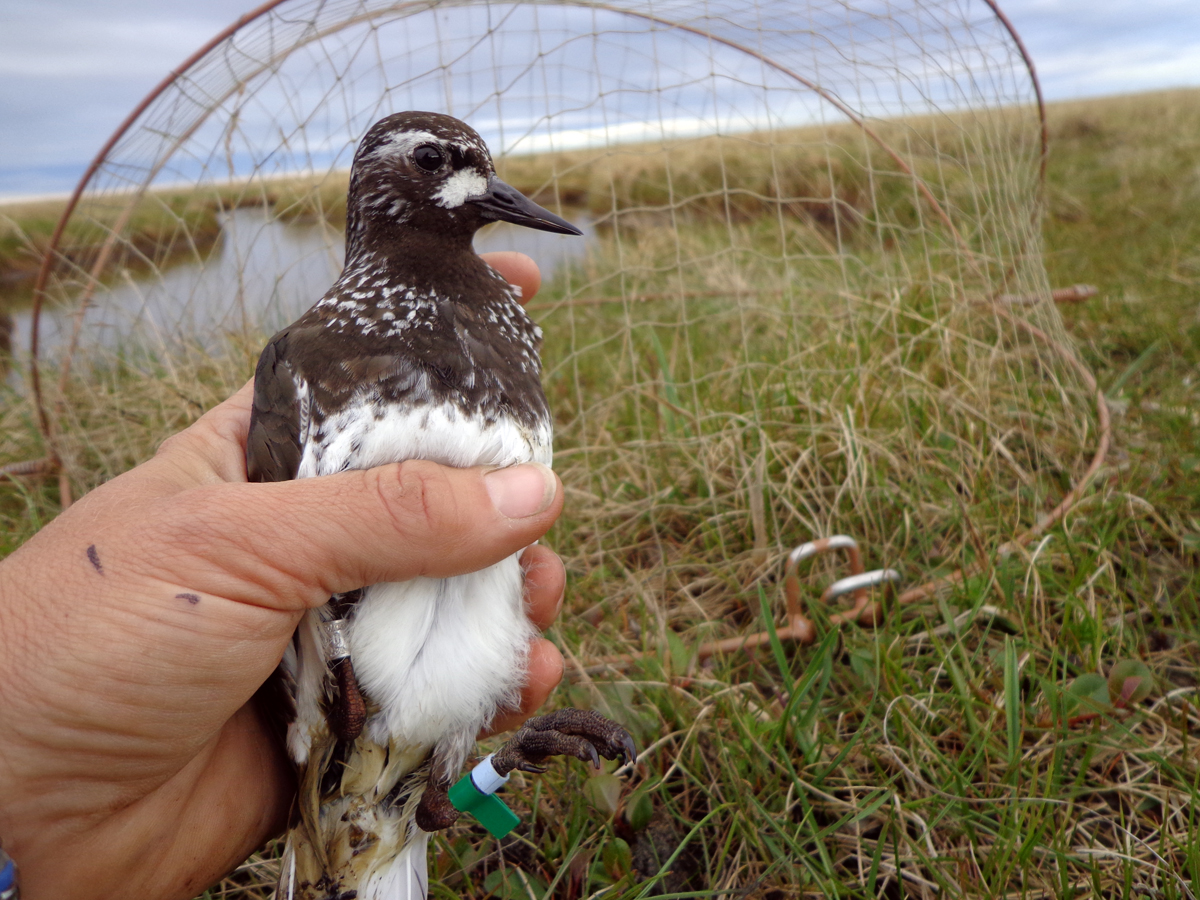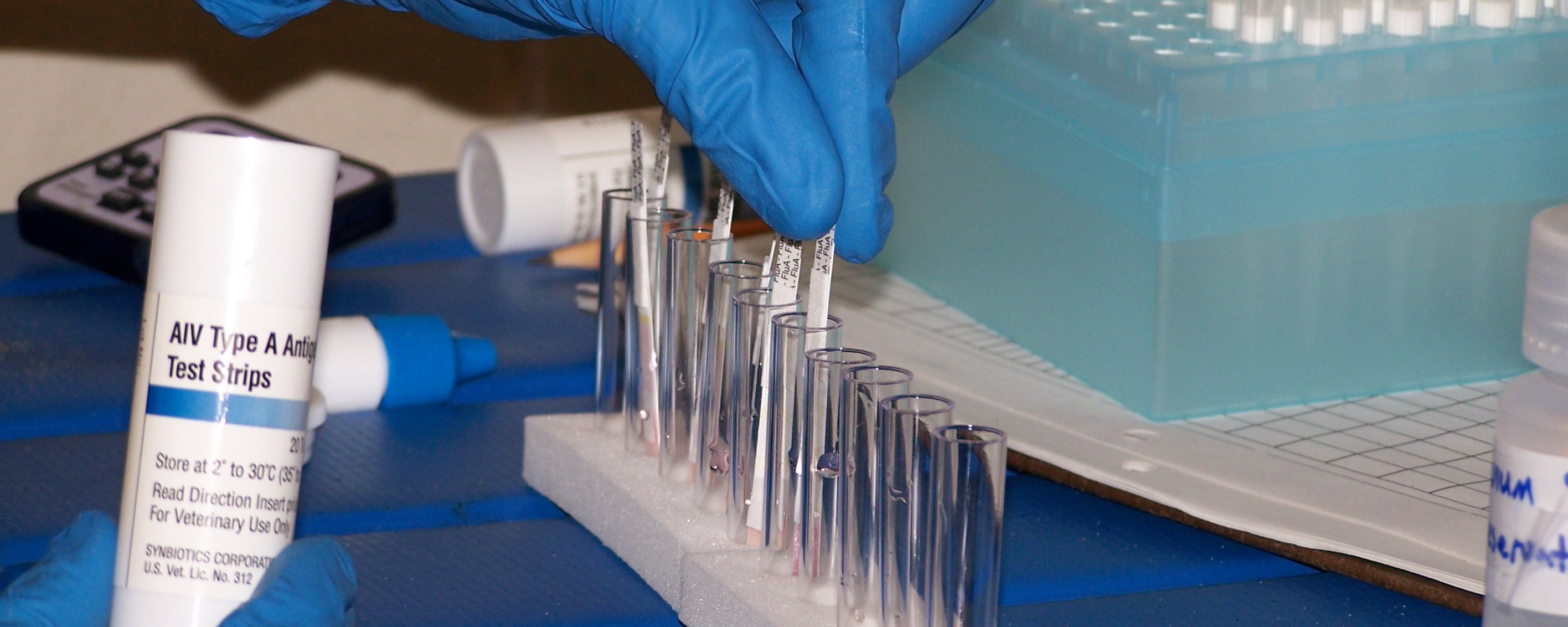Investigating Site Fidelity of Migrating Shorebirds

PROJECT
Investigating Site Fidelity of Migrating Shorebirds
Background
During migration, shorebirds rest and refuel at stopover sites that may be separated by thousands of kilometers. As they make the journey north to their Arctic or subarctic breeding grounds, Western Sandpiper and Dunlin utilize the expansive mudflats of the Copper River Delta. This stopover site, with a total area of about 4,000 km2, including 645 km2 of intertidal mudflats, hosts up to 4 million Western Sandpipers alone. For this reason, the Copper River Delta is considered to be the most important stopover area along the Pacific Flyway for these species of shorebirds.
Northbound radio-marked Western Sandpipers and Dunlin have been detected in relatively high proportions at a handful of North American coastal sites, suggesting that a large fraction of the breeding population uses these stopovers each year. Additionally, during 3 springs of monitoring for radio-marked birds, 8-21% of radio-marked birds detected on the Copper River Delta were recorded only at Hartney Bay; a small, shallow bay on the east side of Orca Inlet.
Purpose
This study was designed to establish whether birds use the same specific locations within a larger stopover area year after year. A better understanding of when, where, and for how long migrant shorebirds stop over will help to estimate the number of individuals using a site. It will also help to determine a site’s importance to both species and flyway conservation.
How
To achieve this, we will attach color bands to Western Sandpiper, Dunlin, Least Sandpiper, and Semipalmated Plover at Hartney Bay. Capture and banding will occur during peak shorebird concentrations over a 3 year period, 2008 - 2010.
Bands used in 2008 were red; future colors will be green in 2009 and orange in 2010. Regular counts will ascertain the number of birds using the area. Proportions of each year’s birds returning to Hartney Bay will be evaluated through recapture rate and corroborated by visual checks. We will also assess the age and body condition of marked birds to look for differences within the migration period and between years. A metal band with a unique number will be attached to each bird to provide future information about movements and survival rates.
PRINCIPAL INVESTIGATOR
Mary Anne Bishop, Ph.D.PWS Science Center
mbishop@pwssc.org




